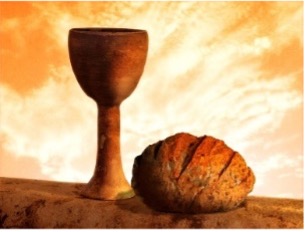This is the third of a series of articles exploring the use of our senses in connecting with God. If we restrict our understanding and the practice of prayer as being an activity only of the head, it can be likened to a bird trying to fly with one wing. We would be missing the richness of the use of the senses that God has given us. To “sense” something is to understand and experience life, gaining knowledge and achieving our potential. As we do with the physical world around in touching, tasting, smelling, seeing, and hearing, so, too, we can use our senses to learn about and experience God.
In this article we explore the use of our Sense of Smell and Taste in prayer.
We might not immediately identify the sense of smell with prayer. However, incense, which has distinctive aroma, has been employed in worship by Christians since antiquity. The practice is rooted in the earlier traditions of Judaism. The smoke of burning incense is interpreted by both the Western Catholic and Eastern Christian churches as a symbol of the prayer of the faithful rising to heaven, as in Psalm 141, v2: “Let my prayer be directed as incense in thy sight: the lifting up of my hands, as evening sacrifice.” For many the smell of incense is an invitation to prayer.
Connecting with God through smell is not restricted to worship practices. As we go through our day we smell may things. When we are outside in nature, we are constantly smelling many things: flowers; vegetation; earth; and trees (I love the smell of pine trees). Sometimes we can smell the presence of animals and birds, although sometimes those smells are not particularly pleasant. Triggered by smells of nature, we can offer prayers in prayer to God, the Creator.
Our sense of taste is connected with our sense of smell. One of my favourite smells is the aroma of food that is being cooked and served as meal, as I anticipate the taste of it. I try and say a prayer of thanksgiving (“Grace”) at least once a day before a meal. But we can also be thankful silently during and after a meal. Triggered by the smell and taste of food, we thank God for the many blessings we have been given. Every time we eat or drink there is an opportunity to offer prayers of thanksgiving.
Eating the bread and drinking the wine in a Eucharist celebration is, in itself, an act of prayer invoking out sense of taste. In some Eucharistic liturgies we are invited to “Taste and see that the Lord is good,” invoking the sense of taste. A useful practice might be to thank God for the bounty of creation or offer thanks for the gift of Jesus, as the bread touches our lips. As we swallow the wine, we might thank God for the sacrifice of Jesus and God’s forgiveness.
Smell and taste can be powerful ways for us to realize that God is in everything and loves us unconditionally.


St. James, Morrisburg — Stormont Deanery